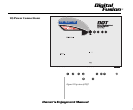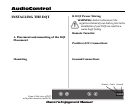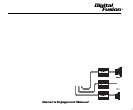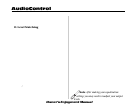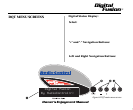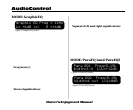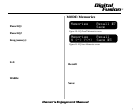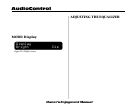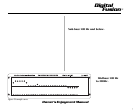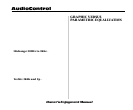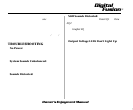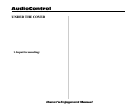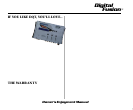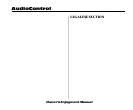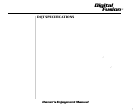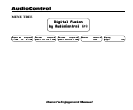
Owner’s Enjoyment Manual
Digital
Fusion
™
13
Figure 13: sample curve
designed to give enough control to maximize
your systems performance but not enough to
get you in trouble. Here is an explanation of the
key areas you should focus on:
Sub-bass: 100 Hz and below - A car without
bass is like a day without sunshine... unless you
live where we do because most of the days in the
Pacific Northwest do not have sunshine. This area
is one of the more difficult to properly reproduce.
Most people refer their bass frequencies to be 6 to
9 dB louder than the rest of their system, although
there are some crazy folks that prefer their bass
substantially louder. The key in this area is to
have enough speakers and power to produce the
amount of bass you desire but don’t use the con-
trols on the DQT to try and force your speakers to
produce sounds they can’t. Too much bass boost
creates a condition called “speakerus explodus”,
which is not pretty to
hear or watch.
Midbass: 100 Hz
to 300Hz - The
phrase, “too much of a
good thing” can cer-
tainly apply to the
midbass frequencies.
This is the transition
usually goes. Take a careful look at the “curve”
on your analyzer and how one frequency
combines with the next. There is no one curve
that will satisfy every person, as we all have
different tastes. How else can you explain
Liberace or rice cakes? The key is to use your
DQT to help balance your system from one
frequency to the next and give your speakers
the sparkle, sizzle, detail or punch that the
acoustics of the car have compromised.
3) You will want to start equalizing by removing
any large bumps, peaks, or areas with too much
energy at a particular frequency. Next, boost
the ranges that do not have enough energy. We
strongly recommend that you cut or decrease
energy before you boost.
4) Although the plethora of controls on your DQT
can be intimidating, fear not as they were



